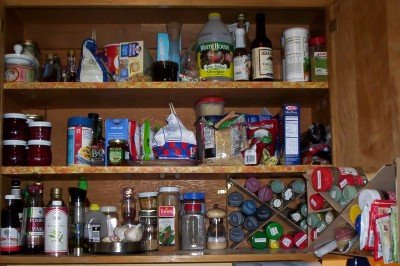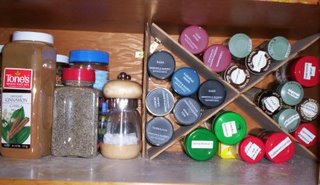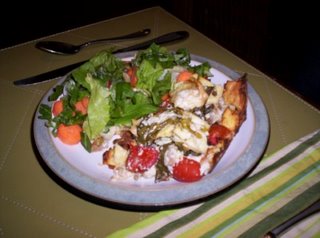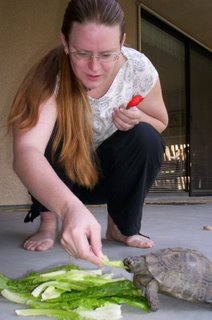 photo from Live Earth CSA Farm in California
photo from Live Earth CSA Farm in California
Last weeks Farm Share included Swiss Chard. It is a beautiful rainbow of color on the stems. This leafy green is similar in use to Spinach. It is part of the beet family and is grown for its leaves and stems.
Storage: After sorting out any withered, limp or yellow leaves, place in a plastic bag with a paper towel to absorb moisture (replace when it gets soggy) and press out excess air. Mine has kept for 2 plus weeks in this manner, but be careful since they can perish faster depending on if it is the end of the growing season. Blanched leaves can be frozen but not stems.
Uses: Can substitute Leaves for Spinach and stalks for Asparagus in recipes. Both the leaves and the stalks are eaten. Young tender leaves can be eaten whole in a salad or sandwich. The stalks can be chopped in 2-3" segments and boiled/ sautéed till tender. The leaves can be shredded and steamed in the small amount of water that clings to them after washing. Then the leaves can be sautéed or mixed with a oil and herb/spice mixture.
Flavor Enhancers: Garlic, nutmeg, oregano, tarragon
Health note: Swiss chard is considered one of the top rate veggies for its nutritional benefits. It is high in many vitamins and minerals. 1 cup of Swiss chard has 35 calories, 300% of the dv of vitamin K, 109% of the dv of vitamin A, and 52% dv of vitamin C.
Safety note: People with kidney or gallbladder problems should avoid eating Swiss chard. As with Kale, Chard interferes with calcium absorption. Wait 2-3 hours between uses of both.
I have never had Swiss chard before. I was fascinated by the colorful foliage. I sat down to do my menu planning for the week and to go through my recipe clipping file and was ecstatic to find a recipe that used Swiss Chard from the August 2003 Martha Stewart Living.
The Swiss chard and Goat Cheese Galette (tart) was delish. My husband and I almost polished off the entire thing. We could not believe the wonderful mixture of flavors and creamy goodness.
Swiss Chard and Goat Cheese Galette
Serves Aprox 6
Prep Time 1 hr 30 min
Total Time 2 hr 15 min
Note: You can mix and refrigerate the dough the night before. When removing the stems from the Swiss chard, cut all the way into the upper portion of the leaf so that you cut in half so that the entire stem is removed. It will make cutting into the tart easier. Toast the pine nuts in a dry skillet so that are cool by assembly time.
12 oz Swiss Chard, washed, stems removed and reserved
2 Tbs olive oil
1 large onion, sliced lengthwise 1/4" thick
3 Tbs balsamic vinegar
salt and pepper
2 Tbs fresh thyme leaves
6 oz fresh goat cheese, room temperature
Oatmeal Tart Dough (recipe follows)
2 Tbs pine nuts, toasted
2 Tbs golden raisins
1 large egg yolk
1. Slice Chard stems into 1/4" pieces. In a large skillet, heat Tb oil over medium heat. Add stems and onions, and cook, stirring until slightly brown, 8-10 min.
2. Cover skillet, and reduce heat to low. Cook stirring occasionally, until stems are very soft, about 15 min. Add the vinegar, and cook, stirring, until liquid is reduced by half about2 min. Season with salt and pepper. Remove from heat, and transfer onion mixture to nonreactive bowl; set aside.
3. Heat remaining Tb of oil in the same skillet over medium-high heat. Add chard leaves, and sauté until slightly wilted, about 1 min. Stir thyme; season with salt and pepper, and set aside.
4. With electric mixer, combine the goat cheese and 2 Tbs of cream. Beat mixture until smooth, about 1 min. Stir in the nutmeg; season with salt and pepper and set aside.
5. Preheat oven to 375 F. On a large piece of parchment paper, roll out dough to a 1/4" thick round or rectangle. Arrange onion mixture evenly over the dough, leaving a 3" border around the edge. Spread goat cheese mixture over onion mixture, and top with the chard mixture. Sprinkle with pine nuts and golden raisins. Fold edges of dough over, and press down gently to seal. Transfer tart on paper to baking sheet and refrigerate 15 min.
6. In a small bowl, beat egg yolk with remaining Tbs of cream. Brush exposed dough with egg wash and bake until golden, 40-45 min. Serve warm or room temp. (I transferred the tart with paper onto my pizza stone after being in the fridge and it cooked faster than the stated time.)
Oatmeal Tart Dough
Makes enough for one tart
Note: if dough is too crumbly add one to two Tbs ice water in a slow steady stream.
1/2 cup all-purpose flour
1/2 cup whole-wheat flour
1/2 cup old-fashioned rolled oats
1 tea salt
1/2 cup (1 stick) of chilled butter cut into small pieces.
3 oz cream cheese (I used sour cream instead which made the dough extra sticky)
1 large egg yolk
1. In a food processor, pulse the flours, oats, and salt to combine. Add the butter, cream cheese, and egg yolk, and process until the dough just holds together, 15 to 20 sec.
2. Turn dough onto a clean work surface. Flatten into a disk. Wrap in plastic; chill at least 1 hr or overnight.
Recipe Follows








